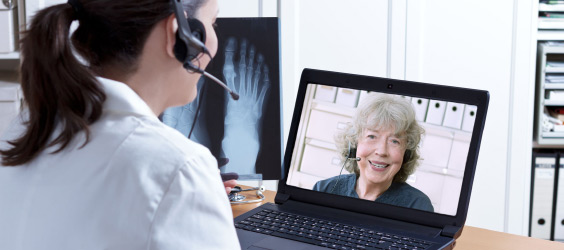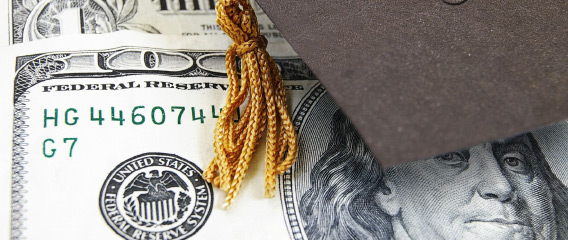The Lighthouse® is the weekly email newsletter of the Independent Institute.
Subscribe now, or browse Back Issues.
Volume 20, Issue 30: July 24, 2018
- T.R.M. Howard, Civil Rights, and Armed Self-Defense
- Government Regulation Is Choking Telemedicine
- Plastic Bans Could Worsen Pollution
- Free College Classes
- The Beacon: New Blog Posts

A pioneering surgeon and successful entrepreneur, T.R.M. Howard made a mint by giving people what they needed and wanted. He esteemed cooperation and eschewed violence. But he also believed that armed self-defense was vital for protecting the emerging civil rights movement from attack by violent racists. In their latest op-ed, historians David T. Beito and Linda Royster Beito highlight this aspect of the remarkable African-American renaissance man who was T.R.M. Howard.
In 1951, Howard organized the Regional Council of Negro Leadership to champion black self-help and equal rights, organizing boycotts against segregation and holding mass rallies that drew audiences in the thousands. Howard’s security detail at these events was heavily armed, a deterrent to any would-be attacker. During the trial of Emmet Till’s killers in 1955, Howard’s home became a well-armed “command center” for witnesses, journalists, and prominent visitors. Howard reportedly kept a .45 at one end of his bed and a Thompson submachine gun at the other. He was right to take death threats seriously: Years later his protégé Medgar Evers was assassinated by a member of the Ku Klux Klan.
“In 1956, after a policeman had beaten his wife Helen, Howard moved the family to Chicago, where he established a thriving medical practice,” the Beitos write. “Although he no longer lived in constant fear, Howard did not retire his guns.” It’s worth noting that after the Civil War, the framers of the Fourteenth Amendment explicitly recognized that it would extend Second Amendment protections to ex-slaves. This was partly the intent. A century later, the civil rights movement could scarcely have overcome armed resistance without the legal right to keep and bear firearms.
Civil Rights and the Right to Self-Defense Go Hand-in-Hand, by David T. Beito and Linda Royster Beito (The Washington Examiner, 7/15/18)
T.R.M. Howard: Doctor, Entrepreneur, Civil Rights Pioneer, by David T. Beito and Linda Royster Beito
Video of Dr. T.R.M. Howard (The Beacon, 4/21/09)
Securing Civil Rights: Freedmen, the Fourteenth Amendment, and the Right to Bear Arms, by Stephen P. Halbrook

Telemedicine has huge potential to revolutionize healthcare by improving access, saving lives, and lowering overall costs. So far, however, consumers have largely shied away from technology-enabled distance consultations. While some analysts have blamed the bust on patients’ lack of awareness, confusion about its expense, and an ingrained preference for face-to-face medical visits, Independent Institute Research Fellow Raymond J. March blames excessive government regulation.
“Telemedicine providers have faced burdensome and complex regulatory structures at the state and federal level,” March writes at The Beacon. Last year, 34 states passed a total of 63 laws related to telemedicine, mostly under the guise of promoting “uniformity.” No wonder this emerging innovation is having trouble getting traction.
Excessive regulation has hampered choice, resulting in only a small fraction of patients with telemedicine coverage in their health plan having used it even though wait times to see a physician are lengthening. “An unfortunate consequence of any regulation is that it restricts the number of alternative products and services available to consumers,” March continues. “Telemedicine is an invaluable component of providing effective and safe healthcare, but regulation has the potential to bust it.”
If Telemedicine Is Underachieving, Government Is to Blame, by Raymond March (The Beacon, 7/11/18)
A Better Choice: Healthcare Solutions for America, by John C. Goodman
Priceless: Curing the Healthcare Crisis, by John C. Goodman

As San Diego debates banning food and beverage containers made from expanded polystyrene (EPS), Independent Institute Senior Fellow William F. Shughart II and Policy Fellow Camille Harmer argue that a ban would likely create worse problems for the environment. As with most other bans, the prohibitionists fail to adequately consider the unintended consequences of restricting people’s choices.
“Such bans take into account only the styrofoam that ends up in the ocean,” Shughart and Harmer write in Fortune. Reliance on substitute products—such as disposable paper cups, paper food cartons, and paper straws—would likely cause greater paper waste, carbon emissions, and water pollution. A disposable paper cup, for example, requires 20 percent more fossil fuel and 50 percent more electricity to manufacture than the EPS version it would replace, Shughart and Harmer report.
“To address the problems caused by plastic pollution, it’s better to target its improper disposal than plastic itself,” the authors continue. “California would be better off to encourage private recycling options, incentivize people to use EPS in more environmentally friendly ways, or wait until alternatives become more viable.”
How Banning Plastic Straws Could Make Pollution Even Worse, by William F. Shughart II and Camille Harmer (Fortune, 7/12/18)
Plastic Pollution: Bans vs. Recycling Solutions, by Katie Colton, Camille Harmer, Brian Isom, and William F. Shughart II (Independent Institute Briefing, 5/14/18)

Are the high cost and questionable career relevance of much that’s offered in American colleges and universities now sparking a revolution? A few lights on the horizon offer hope. New initiatives are now underway such as the start-up OnlineDegree.com, which offers free college courses. Also, Modern States Education Alliance is helping high-school students get college credit for AP classes. And Walmart is offering its employees classes in supply-chain management at the cost of a dollar a day, while Starbucks and McDonald’s also offer their workers an educational benefit.
In a recent piece at Forbes, Independent Institute Senior Fellow Richard K. Vedder makes sense of the trend. In the case of large employers, the developments are motivated by a tight labor market that has made it challenging for companies to hire enough—and retain—good workers. The government should also support the trend, he adds, given the current high levels of state and federal spending.
“In this fiscal environment, privatizing low tuition efforts is highly desirable,” Vedder writes. “State universities were supposed to be cheap, but as they become ever more inefficient and bureaucratic, and as governmental subsidies to them decline as they lose public support, the free college efforts of both private philanthropic groups and profit-making firms like Walmart are a means of assuring that even low-income persons can achieve a college education.”
Privatizing Free Tuition Will Help Relieve Our Nation’s Fiscal Overreach, by Richard K. Vedder (Forbes, 6/11/18)
The Academy in Crisis: The Political Economy of Higher Education, edited by John W. Sommer
- Will Janus Decision Mean Payback Time for Workers?, by K. Lloyd Billingsley
- The Fiscal Impact of President Trump’s Tax Cuts, by Craig Eyermann
- The Equalizer 2 Is More Than Just Another Vigilante Movie, by Sam Staley
- Rearmed Pillage People Ride Again, by K. Lloyd Billingsley
- Feds Spend $3M to Find Out Why Clubbers Get Drunk and Aggressive, by Craig Eyermann
- Stockton, Chicago Money Giveaways a Guaranteed Bust , by K. Lloyd Billingsley
- Two-way Trade in the “Same” Commodity, by Robert Higgs
- Lessons for California from Canada’s Killer Nurse Cover-Up, by K. Lloyd Billingsley
- Soccer Champions ... and Immigrants, by Alvaro Vargas Llosa






